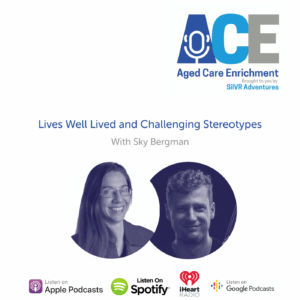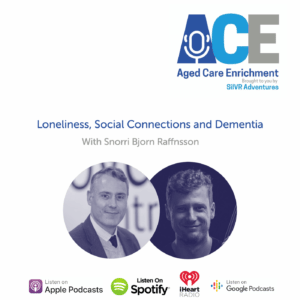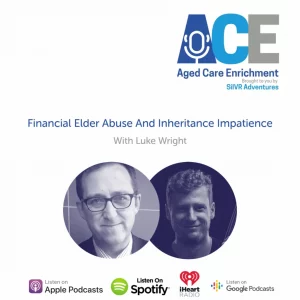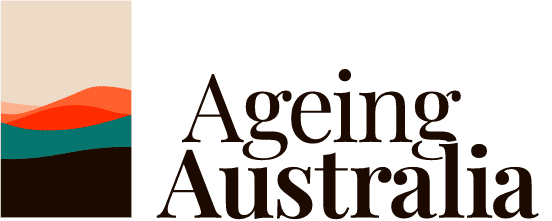In this episode on the inter-related problems of sarcopenia and malnutrition, we spoke to Professors David Scott and Judi Porter from Deakin University.
Transcript
Ash de Neef: David and Judi, thank you so much for joining us on the program today.
David Scott: Thanks for having us Ash.
Judi Porter: Thanks Ash. Good to meet you.
Ash de Neef: Yeah, likewise. And maybe we can start for our listeners who don’t know about you guys. Maybe we can start with a bit about yourselves. Judi, would you lead off for us?
Judi Porter: Sure thanks Ash. So, I’m Judi Porter and my role is as discipline lead for dietetics at Deakin. And so in that role, I contribute to our Masters of Dietetics teaching program, but also lead and collaborate on Deakin based and quite a few external projects as well. I’m also editor in chief of Nutrition and Dietetics, which is our national nutrition and dietetics journal.
And, in recent months have been an aged care subject matter lead for Dieticians Australia.
Ash de Neef: Fantastic. And David.
David Scott: Uh, Yeah. So I’m an associate professor of research at Deakin University as well, alongside Judi. My background is in exercise science and my PhD was on sarcopenia, which I think we’re going to talk a bit more about today. But essentially, yeah, I’m really interested in exercise interventions to improve physical function and independence in older adults.
With my interest in Sarcopenia, I lead some studies into improving the translation of what we’re learning in research into clinical practice, so that older adults uh, being tested and diagnosed and managed when they might have a poor physical function.
Ash de Neef: Fantastic. And you called out there the topic for discussion here. It’s something that I learned recently is this term sarcopenia. And David following on, from what you’re saying there, can you give us a bit of an explanation of what it is for those people who don’t know.
David Scott: Sure, well, it’s a good question because I think a lot of us really don’t know exactly what it is because it hasn’t been particularly well-defined. So it was first defined over 30 years ago now as the age related decline in muscle mass and over time the research increased thanks to, I guess, having a name and people looking for it.
But what we found is that the decline in muscle mass itself isn’t necessarily a good predictor of people who will have outcomes like disability falls fractures, for example. So in around about 2010, a number of societies got together and they suggested that sarcopenia should be considered, not just the loss of muscle mass, but also the loss of muscle strength and physical performance generally.
And so what we kind of have now is a term that is really defined as the progressive, but accelerated loss of muscle mass and function with age. Because everybody will lose muscle mass and strength as they age, but in this condition known as sarcopenia, we see that is probably accelerated relative to the average person.
Ash de Neef: Great. And what are some factors that lead to this?
David Scott: Look, certainly a contribution of low physical activity to sarcopenia. And probably also, it sounds like the same thing, but what we call sedentary behaviour. It’s a different side of almost a different coin in some ways. There is some evidence that even people who are very physically active, if they have a lot of sedentary time, might experience great muscle wasting and so that is a concern on its own.
So that tends to increase a little bit as we age. And I think, probably most importantly, what we see is vigorous activity is most beneficial for our muscle function and our muscle mass. And that’s probably the type of activity that decreases the most as we age. Because we probably can’t perform it like we used to, we start to get the aches and pains that make it harder for us to do it.
What we see is kind of a withdrawal of what we call an anabolic stimulus for the muscles and then they essentially respond by decreasing in size and the amount of force that they can produce decreases as well.
So I really to address that, that the best thing we can do is to try and maintain that amount of vigorous activity. And really it’s sort of unequivocal that the best type of exercise for maintaining strength and muscle mass is a resistance type training.
So that’s really any activity that involves our resistance. It can be lifting free weights, working on a weights machine even working with your own body weight, or with elastic bands for instance, are all types of resistance exercise. And they really are the most effective types of exercise for our muscles certainly.
Ash de Neef: Great. And so this might have the effect of counteracting a loss of muscle mass or muscle strength. What are the risks associated with having a reduced muscle strength?
David Scott: So sarcopenia has been associated with quite a number of negative outcomes. The key ones obviously relate to things like disability and mobility itself. So just the capacity to move around the home and perform those everyday activities as well as move around your community. So then we start to see a loss of independence, increase risk of institutionalisation.
But sarcopenia is also associated with some chronic diseases. For instance, our muscle plays an important role in, how we handle glucose for instance, and so people with sarcopenia may be at increased risk for things like type two diabetes. So it is linked with increased hospitalisations. Part of that is probably related to an increased risk of falls, which are generally seem to be higher in people with sarcopenia.
And it’s sort of been independently associated with just mortality itself. So I think all this kind of cascade of factors that can occur from sarcopenia can lead to an increase risk of an early death unfortunately,
Ash de Neef: Okay. Lots of potential negative outcomes. And just so I’m extra clear on this, sarcopenia is it’s not a name for a natural aging process. It’s the result of sedentary behavior and perhaps malnutrition in older adults. Is that correct?
David Scott: Yeah, I think that’s a really good summary of it is that – Yes, muscle wasting and functional loss does occur naturally, but this is seen as an accelerated loss. And it is yeah, I think in large part, due to physical activity and nutrition issues.
There is a large part of it that he’s genetically determined as well. We’re all slaves to our parents in some ways in what happens to us in later life. But certainly there are just a number of changes that happen at the muscle level. We see changes in the composition of the muscle so that the fibres that we have in the muscle that produced the most force, we often see a kind of decline in, in their size so we’re not producing as much force.
The sort of signals to the brain that we have from our muscles and back just don’t seem to work as well as they did when we were younger. So there’s a lot of things going on that probably go beyond just physical activity and nutrition changes, but we certainly think that a big component of it can be addressed. And we can maintain muscle mass and function for longer, if we can maintain good levels of physical activity and nutrition.
Ash de Neef: Okay. So with the malnutrition side, that is this a factor of you’re lacking certain aspects of the diet or it’s just a result of not eating enough? How do you, can you define this malnutrition that might lead to sarcopenia Judi?
Judi Porter: Well, malnutrition happens when someone is not able to meet their energy requirements, typically that leads to unintentional weight loss. And then we assess malnutrition using a range of different factors, including some functional measures such as hand grip strength, the ability in a lay person’s language, I guess, to take the lid off of a jar that’s one indicator, I guess, of hand grip. But we can measure it more formally in terms of scientific studies and in clinical practice.
But also looking at the distribution of your body composition. So, indicators there include um, body mass index and recent weight loss. So altogether they can be assessed in a range of formal assessment tools and you, can be, deemed to be malnourished or at risk of malnutrition.
And so, Ash, we can come and talk about some of the dietary approaches there, but really wanting people to in a sense, move away from those guidelines that are used for the healthy population, that is people who are trying to avoid chronic diseases. And instead focus on perhaps a higher energy, high protein diet to try and ensure that they don’t lose any more weight on their journey.
Ash de Neef: Fantastic. And what sorts of nutritional information is really going to be nutritional content is really beneficial for people who might be at risk of sarcopenia.
Judi Porter: Yeah, Ash I guess if we think about sarcopenia and malnutrition, sort of almost running hand in hand particularly in that aged care space. Sarcopenia of course will be highly prevalent in many recipients of aged care services, but malnutrition is also prevalent in around 50% of residents of aged care homes. And of course, many also who who’ll be receiving care at home, so they typically do run hand in hand.
And what’s really important is we don’t try and follow the Australian dietary guidelines. They’re not appropriate for this population. And so, you know, so often I’ve seen it through my years of clinical practice, very frail little older ladies losing weight. And they’ll say to me, “I eat so well, dear, I eat my fruit and vegetables. I eat my salads every day. I don’t have any chocolate, I don’t eat anything I shouldn’t.”
And my point to them is to throw out those rules, they’re not appropriate for you anymore. And in fact, here’s your time to almost start, binge out on all of those other foods that you’ve been trying to avoid. To try and prevent you getting chronic disease, actually they’re the foods that you should be eating.
So, high energy, high protein, typically from the meat and meat alternatives group. So meat, fish beans, legumes, tofu, that group which are a high protein group. But also then the dairy group; milk, cheese, yogurt, custard are all really high energy and high protein. But encouraging people to not be choosing that the low fat version as all of us um, would be to try and avoid our risk of chronic disease. But go all out and take the full fat option to really boost those energy intake.
Also looking at discretionary items, which again, we try and limit typically for the broader Australian population. But when you’re trying to put on weight there’s nothing like a good bowl of ice cream, some chocolate, some milkshakes, those types of things to really help boost a few extra kilos. And that’s exactly what you’re trying to do.
So rather than this trying to lose weight, try and eat really healthily. You’re actually trying to flip that on its head to really boost your energy intake.
Ash de Neef: Yeah, that’s great. And I can see that there might be a challenge, even if, for example, in a residential aged care facility, you might have a care recipient who has thought all their lives, “oh I gotta be careful how much ice cream I eat, how much chocolate I eat”. You’re going to need to work with them to encourage them to be more enthusiastic with those sorts of richer foods aren’t you?
Judi Porter: That’s right. It’s funny how you bring your own biases and your own beliefs into your work. And so it is about actually educating the whole workforce around what the appropriate strategies are to deal both with sarcopenia and with malnutrition. As you’ve raised there it really can be a challenge at that sort of institutional level to, to meet energy requirements.
And in one of our recent studies we found that actually only one in ten main meals, that is lunch or dinners served in aged care homes were being fully eaten. And this is one of the reasons why there’s such an issue, why malnutrition sarcopenia is such an issue. Because actually residents are not eating all of their meals.
That’s got a couple of follow on effects, Ash and, and one of those is that here’s obviously a lot of food waste. And we don’t want that food to be wasted, we actually want people to be consuming the food so that they get the nutritional benefits from it, rather than it typically heading into landfill, which is another story perhaps for another day Ash but…
Equally one of the reasons they’re not able to finish their meals is because people who are older and who aren’t un-expended a lot of energy, actually don’t typically have a very high appetite. And so they’re not able eat the same volume of food that we would eat. And so what’s really important is that we make every mouthful count for this population. That rather than taking foods such as broths, low energy soups salads, things that are of little calorific value. The types of foods that you would try and eat if you’re trying to lose weight, we want to remove them from the menu and instead make every mouthful count.
So making them nice fortified meals, high in energy and high in protein to ensure that we’re really maximizing the chances of the residents maintaining their nutritional status whilst they’re in that residential home.
Ash de Neef: One aspect, I imagine is going to be an important part of the treatment of sarcopenia is you’ll need to have an intervention, and this could take both sides of exercise and nutrition. David, what would you see as a starting point to addressing some of these symptoms?
David Scott: I think the first thing from my perspective is, if we’re going to implement an exercise program for any older person, and really for any person, we need to know what their goals and their priorities are. And I think sometimes we do neglect that. We ask people to take on an exercise program that may not actually be doing for them, what they would really like to see.
So the most common thing that we hear from older adults is the thing that matters to them is probably mobility. Being able to move around the community, having their independence. So a lot of what we implement certainly for community dwelling older adults, and we don’t actually do a lot of research in the aged care area.
But certainly in terms of the community dwelling people we try and engage them in activities that really are primarily targeting the lower limbs improving strength and balance. So that they can walk around, they can have confidence in walking around that they’re not going to fall. And really maintain that independence.
And so I think every type of exercise really needs to be tailored to what the individual needs. It needs to be progressive. So once we get to a certain level where we can perform that exercise, we need to move on to the next thing and getting more challenging or the benefit is just going to plateau where it is.
So yeah, in the aged care setting I recognise that there’s a lot more challenges than probably what we experienced in the kind of research sector dealing with community dwelling older adults. Obviously costs and resources are limited in what you can actually do.
But I think there’s an opportunity for in the aged care sector, people to be up-skilled a little bit in looking at what the residents are doing in terms of their physical activity. Having discussions with them about what are your priorities? What are your goals? What are some barriers that you have to movement?
And even just having simple discussions that maybe take a few minutes, just to kind of identify some ways that you can work together get people more active.
Ash de Neef: Hmm. I could see that there might be there might be some sort of low self self-esteem and some feelings of maybe feeling a little bit down on yourself, if you’re losing mobility as you’re agieng. And it might be also part of this process might be encouraging people that it can actually be better, we can work on this and help you be a bit more mobile.
Do you see that as part of the process as well David?
David Scott: Absolutely yeah I think the motivation side of it is huge. I think long-term, that’s a big issue too. I think when people are in that phase where they are starting to notice a decline they are quite motivated to address it. And it’s maybe not as much of a challenge for most people to get them involved in some type of intervention.
But I think it’s probably that stage they get to, often with exercise we say it’s about 12 weeks into an exercise. Where the massive benefits that you’ve been having, from that initial starting point do start to plateau a little bit, and you’re not, you’re not seeing those same gains.
So I think finding ways that those points particularly, that’s a key kind of point where we need to embed this as a lifestyle focus now. It’s not this thing that you’re doing for a short period of time to try and get a little benefit. It’s “this is your life now”. And that’s the hardest thing I think, making it a habitual for people.
But certainly having conversations around what are your goals, helping people understand that the benefits are real and and that they can continue to have benefit. They can continue to maintain that level of independence that they have. I think those are really key conversations.
Ash de Neef: And Judi, I can imagine that for older adults in the community or receiving home care, nutritional interventions would present all sorts of challenges as well.
Judi Porter: They do. From a study perspective they have all sorts of challenges in terms of compliance uh, implementation and measuring nutritional outcomes, that’s a challenge. But in terms of practical life sense Ash, I guess which is what you’re more interested in, there’s challenges in terms of at the most basic level I guess. Financial challenges that older adults so often face, particularly those living alone.
Issues of food security, or as such food insecurity where people may not be able to readily access food or the amount of food as often as they need it, so that’s a problem in itself. Also having the skills and the ability, and the motivation and the confidence to prepare and to cook food. Or a level of reliance on family or carers to get them to the supermarket to buy and then to produce food, I mean that’s just before you even start eating.
And at the eating level, then there’s issues around texture, where people might need modified texture meals. They might have dentures, for example that are ill fitting and, the combination of nutritional and dental issues are overwhelming. There’s a lot of evidence presented at the Royal commission around dental issues combining with nutrition issues. And so we need to make sure that people where they have dentures that have them appropriately fitting. Or otherwise if they still have their teeth, that they are in good condition and looked after. And of course that’s another set of issues around cost accessibility, ongoing care, et cetera.
But once they finally make the meal, hopefully we’re able to successfully chew and swallow it in the right amounts. And it’s often as I mentioned the right amount that can also be challenging. That people can actually receive the volume of food that they need. And Ash you talked about, you know, motivation with David. and we so often see people who are lonely and people who are depressed, particularly those living alone that of course also impacts on their nutritional intake.
Let’s face it when you’re struggling to have the motivation to get up and about in a day, it’s pretty tough to then face cooking a meal for yourself. So that’s when you know, support services can be really useful. Meals on wheels, spending a day at at a day centre, getting support and friendship from others eating with others where you can.
And I think, there’s a lot strengths to eating with others in residential care. We know that people who eat together in a dining room are more likely to eat more than those who eat alone. So it’s the things that you find in that family setting, the eating together, the sharing of a meal, the distraction, you just sit and eat while you’re talking, are more likely to make sure that you can get all of the nutrition that you need.
Ash de Neef: Yeah, lots of variables there huh I wonder in the practical sense.
Judi Porter: Lots.
Ash de Neef: Yeah and in a practical sense are these interventions, Is that, does that come in the form of a diet plan or a meal plan? What would that look like?
Judi Porter: Yeah, certainly I guess from a dietician’s perspective then you may be following someone up in the community after discharge from hospital. So dieticians are available in the community also available in private practice settings, I guess that’s where the majority of people living and receiving care at home would be able to access a dietician.
Certainly through the government scheme of care plans that you can receive five sessions with an allied health professional free per year. Is one way that people can access a dietician through affordable, more affordable measures than if you’re paying privately I guess. And yes, you would work with your client, whether it’s a patient, a resident to develop a meal plan that really fits their, that of course would be based on what they’re already eating. So finding out what someone already eats to get an idea of their food likes and dislikes, in addition to current intake, but then tailoring that based on their individual needs and providing follow up care. To see If their nutritional indicators are progressing in the right direction.
So whether those indicators of course are weight based, but there are other functional measures as well. And as David was talking about, for exercise that may be around balance, around falls risk. But for nutrition, you know, aside from from weight, it’s whether you then can get back into the community, out doing the things that you love to do.
And that’s at the end of the day, what it’s about right? Living well, having a high level of quality of life and I think that’s what we’re all working towards.
Ash de Neef: Yeah, absolutely. And I wonder, cause you mentioned there this idea of, you know, the individual needs are so crucial at this point. But in some, residential settings, the idea of having lots of individually tailored meals may not be operationally possible. What is the reality of that look like in residential aged care?
Judi Porter: Look, meals certainly do vary between, residential facilities and I guess that’s one of the take home messages from that Royal commission into aged care. Some people receive amazing nutrition and other people’s menus and access to food has been less than desirable.
And so, in response to those findings the government has introduced a scheme. I’m not exactly sure when it starts, but I think quite soon that there’ll be more access to funding to support better provision of menus and food within residential aged care.
I guess where my lobby on that point is at the moment is that we want to make sure that we make every mouthful count. And that we actually don’t just provide a whole lot more food that people can’t eat. We want people to be able to eat, to meet their nutritional requirements.
So, what I’m saying from that Ash is referring back to that same piece of research there where we saw that only 10% of meals across a multi centre trial that I was involved with, were fully eaten. We don’t just want to provide another $10 per resident, per day of food into that food waste pile. We actually want to make sure that food is being eaten. Remembering that people could only manage um, small volumes of food. So really making sure that we can focus on these high energy, high protein diet. To really reduce the likelihood of residents becoming malnourished.
Ash de Neef: Yeah, absolutely. David jumping back over there, so we’re talking about movement and prescribing a plan or working with an individual in a care setting to develop a routine that’s going to help them address some of these deficiencies. How does that happen in one-on-ones in a large residential facility?
David Scott: Yeah I think that’s definitely a challenge. And obviously facilities do vary considerably in terms of what they have available to them. Obviously there’s facilities that beautiful gym complexes and facilities that really have a very little in terms of exercise equipment and people to deliver the exercise.
So it’s difficult to I guess have a kind of blanket summary of how it looks. Certainly as Judi mentioned, you know, the allied health referral scheme is open to exercise physiology as well. Patients can potentially be referred to an exercise physiologist and can receive five free visits with an exercise physiologist each year I believe it is.
And I mean, that is one way to get an exercise program started. But you obviously need ways to then continue that on whether it be in the aged care facility or if there’s provisions for the residents to a gym or somewhere in, in the community nearby. They’re probably the barriers I think in terms of how that’s managed.
So look it’s very individually in terms of what the residents are capable of doing. I think that you’ll find there’s a spectrum of residents who maybe will just benefit from some kind of movement plans to get them up off the chair and moving around reasonably regularly, breaking up that sedentary behaviour. To the quiet, functional people who could benefit from being in a gym, lifting free weights.
And so what I think, that the starting point is, is potentially the up-skilling of staff within the facilities to be able to identify those needs. To have those conversations, see what the residents are interested in doing, what their goals are as we talked about earlier.
And then I guess, being able to kind of refer them onto the right kind of intervention that might be suitable for them. Whether that’s a group exercise where, people are just doing some flexibility training and a little bit of a balanced training in the community hall. Or out to gyms if that’s available to them.
But I think that the main thing is that the residents have options available to them, so that they can select something that kind of appeals to what they would like to do and what their needs are.
Ash de Neef: Great. And maybe some of that’s going to be helpful here for listeners is, for people who don’t have a physiology or a nutritional background, what are some sort of signs to look for in older adults that might be experiencing malnutrition or sarcopenia?
David Scott: I think from the functional side of things, there’s some indicators that we refer to. There is a tool that people can look up on the internet it’s called SARC-F, and that just lists five key kind of indicators of people who might be losing physical function.
So it asks about their ability to carry a certain weight, whether they think they could do that. It asks about whether they need any assistance with walking. It asks about falls that they might’ve had. And it asks similar questions to that, it’s only about five questions.
And so that can be quite helpful, I think as just sort of a screening tool to identify some of the mobility limitations, some of the strength limitation that might be manifesting, and that might need some type of intervention.
Ash de Neef: Great and Judi do you have anything to add?
Judi Porter: In terms of malnutrition risk Ash, I think that there’s a couple of key questions. One is have I lost weight? Particularly did I mean to lose weight? So was that weight loss unintentional? And I think um, that’s a really good indicator, particularly for family members seeing they’re visiting their parents at home, visiting their parents in residential care, for example.
So are they clothes fitting? Has their belt, the notch on their belt moved? Are their trousers looser than before? Are their shoulders more hunched over those cardigans or coats, more, more baggy on their shoulders? And I think in warmer climates you can often see that the bones are perhaps protruding more around the shoulder, around the chest, and of course around the legs – bits that are more visible than before.
For patients with dentures, are they fitting correctly? Really good indicators of whether someone’s been losing weight. And then start asking those questions to look at recent intake, has it changed? Has that weight loss been really quite aggressive? That is does someone need to have more follow up and check in, from the doctor? Is there something more sinister happening, or actually is there someone on that trajectory towards malnutrition and where do we need to stop and intervene to turn it around?
Ash de Neef: Yeah, absolutely. Those are, I guess all of those are very clear, visible signs that people can pay attention to. Guys I feel like we’ve got a lot of stuff here and we’ve really dived deep into the topics that we’re looking forward to getting into.
Is there anything you wanted to talk about before we go? Any sort of research or any takeaway messages you wanted to share with an audience?
Judi Porter: Yeah, no Ash look I guess in terms of IPAN (Institute for Physical Activity and Nutrition), David and I are involved collaboratively in quite a few different projects at IPAN. And look, we’re not particularly looking to recruit for those through your webinar.
But we do have research that comes out from time to time, and so I guess, encouraging your listeners to, to keep an eye on the IPAN website. But also to perhaps get in contact with David or I, our details are pretty easy to find, using our search engine on the internet.
Email us if you’re interested in our research and we’re happy to share that up with your listeners, if we’ve got something that we think would be relevant for them.
Ash de Neef: Awesome guys, David and Judi, thanks for joining today
David Scott: Thanks for having us
Judi Porter: Thank you, Ash. It’s great to chat today, thanks again.






